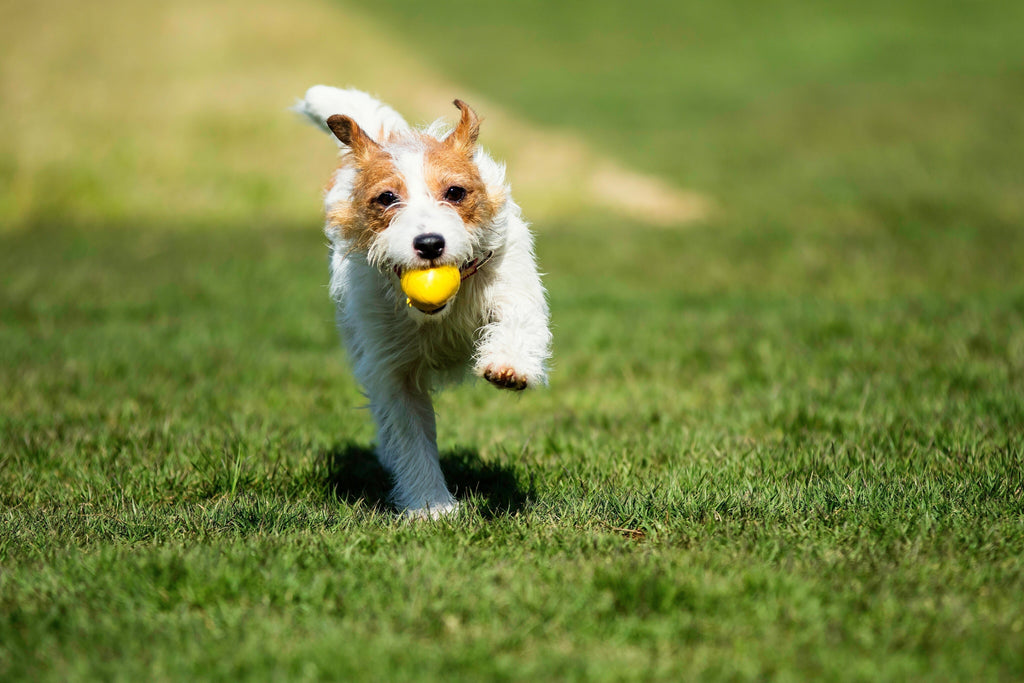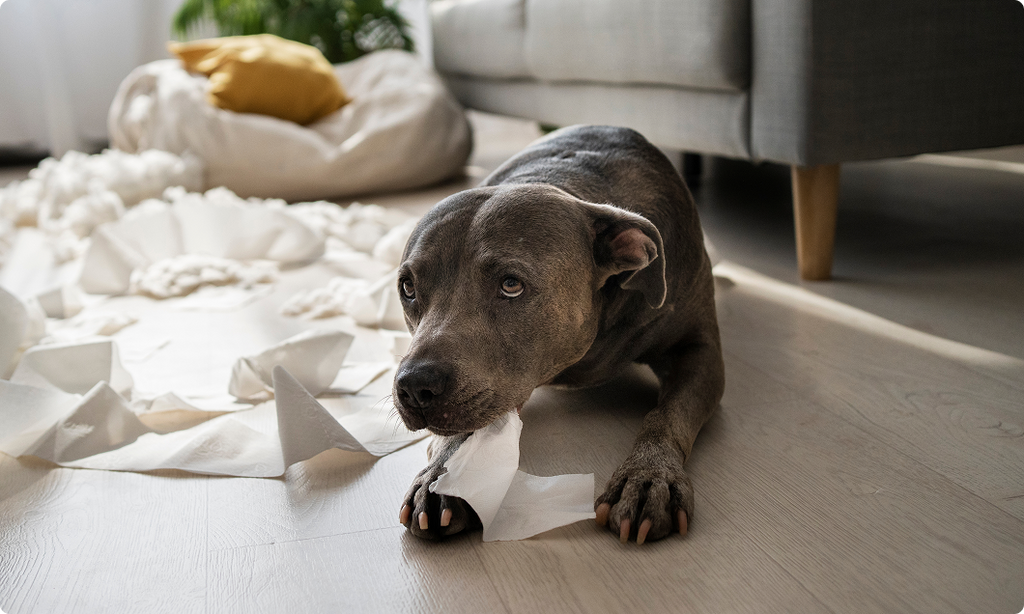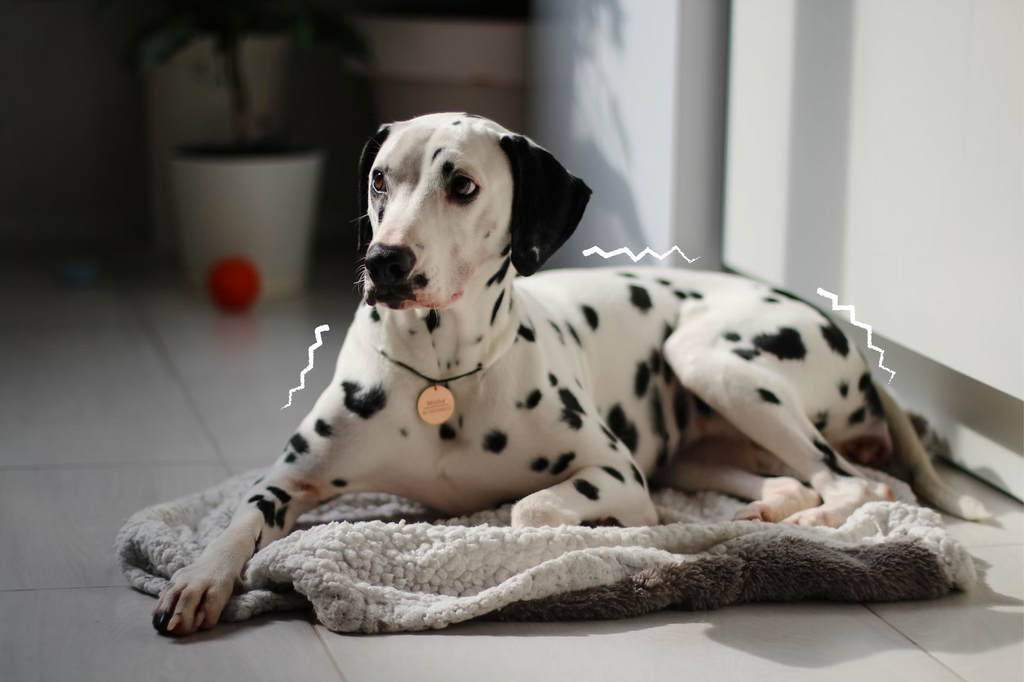How to Help a Dog Lose Weight: 13 Life-Changing Tips

Did you know that 41% of dogs are overweight in Australia! Remember when your dog was just a pup, and they bounced all over the house and yard… so full of energy? Well, as dogs age, they slow down, and as they slow, they burn fewer calories.
Plus, their metabolism naturally slows. This is why so many dogs are overweight. Unfortunately, overweight dogs have more health problems and do not live as long. Reducing your dog’s waistline isn’t that difficult, but it does take time and know-how. Learn how to help a dog lose weight safely.
Some dog breeds are also a lot more prone to weight gain, in fact some Labradors lack the specific gene to let their brain know they aren't hungry!
Breeds most likely to be overweight:
- Labradors
- Cocker Spaniels
- Golden Retrievers
- Pugs
- Beagles
- Basset Hounds
- Dachshunds
Why Should You Help Your Dog Lose Weight?
If you want a longer life that is higher quality, you want to keep your dog from packing on those excess pounds, and if they already have a bit too much around the middle, you want to start reducing the extra weight as soon as possible.
Life Longer and Happier
Dogs that are thin and trim live longer lives with few health issues [1]. In fact studies have shown that overweight dogs have a shorter lifespan by 2 1/2 years, which when you consider the average dog lives about 13 years - is almost 20% of their lifespan reduced!
Diseases Caused by Excess Weight
There are a number of health problems that those extra pounds can cause, things such as:
- Arthritis and joint problems
- Diabetes
- Heart disease
- Respiratory Issues
- Skin Issues
- Cancer
It is nice to know that something as simple as keeping your forever friend nice and trim will improve the quality of their life along with giving you extra years to spend with them.
Where to Start on a Doggy Weight-Loss Journey
Of course, when your want to aid your dog as they get more fit and feel better, you need a starting point. And while this may seem obvious, keep in mind that starting a diet is one of the hardest hurdles to overcome.
#1 Mark Your Dog’s Starting Point
The first thing you need to do is establish your dog’s starting point. Why? You need an honest look at how much they tip the scale. And you don’t want your doggo packing on extra pounds. Finally, you want your dog to get used to getting on the scale.
#2 Make a Veterinary Appointment to Determine a Safe Weight-Loss Rate
Next, make an appointment with your vet so they can calculate how much weight your dog needs to lose and how much you should reduce their caloric intake. Generally, you will reduce their diet by 3%-5% so that they will slowly and safely drop the pounds.
#3 Ask Your Vet to Run Tests for Common Weight-Related Health Conditions
There are many health conditions that will cause your dog to gain weight. Some of these are:
- Diabetes
- Cushing's Disease
- Gastritis
- Thyroid Issues
- Liver disease
- Pancreatic Issues
Your vet can help manage any of these, which should help with the weight problem.
#4 Get the Rest of the Household On-Board
Another thing you want to do is make sure that people cooperate in feeding so they aren’t fed multiple times. Two or three dinners a day will quickly boost your doggo’s weight.
If you have multiple dogs, feed the overweight dog separately, so there isn’t competition for food.
Help Your Dog Lose Weight with a Healthier Diet

Like all diets, a dog weight-loss diet requires considering a calorie-in, calories-out approach. This starts with a healthier diet. If your dog is eating the right amount of the right foods, you can bet that they will start losing some of those unwanted pounds.
#5 Commit to How Much Your Dog Should Be Eating?
Your vet can also help you determine the caloric needs of your dog, and then give you instructions on how much to reduce it so that your dog remains happy and healthy [2]. The amount of food you give your four-legged friend varies, based on breed, age, activity, etc.
#6 Feed Them More Often But Keep It to Smaller Meals
You might want to feed your dog several times a day. Some people even feed their dogs 5 or 6 times each day. If you only feed your furry friend once, try giving them their normal morning meal, and a leaner, veggie-based meal in the evening.
#7 Fewer Carbs and More Protein & Fiber
You will probably want to change the food that you are giving them. Look for a dog food that is higher in protein and fibre and lower in carbs. You can also give them meal toppers of fresh or cooked veggies as well. They are usually lower in calories and higher in fibre–just what your vet ordered!
If you are changing your dog’s food, you need to transition it over a week or two. Slowly increase the new food and decrease the old. This will cause fewer gastrointestinal problems as they are adjusting more slowly.
#8 Measure Their Food Accurately
While it might sound like common sense, make sure that you are using a measuring cup and measuring the food accurately–level cups, not heaping, and resist the temptation to give your loving friend a little extra because that is how they gain those extra pounds to begin with.
#9 Don’t Forget the Veggies
You can use veggies as food toppers and treats. They’re filled with healthy fibre and are often low in calories. Experiment and see which veggies your doggo loves most, and use those. Things you might want to try are:
- Apple
- Asparagus
- Broccoli
- Carrots
- Celery
- Peas
#10 Count the Treats & Switch Your Dog Parent Love Language
We all want to reward our four-legged friends, but it doesn’t take long for those treats to add up. Try giving your dog smaller treats or treats that have fewer calories. Additionally, try to resist giving them human food or more treats when they beg
Instead, replace showing your love with tasty bites with extra playtime or cuddles Your dog will adore getting a little more attention and affection from their favourite human.
#11 Slow Them Down, If Your Dog Wolfs Down Their Food…
Try using a slow feeder to stretch out their mealtime. You can also use a puzzle feeder. This will slow them down and give them a little intellectual stimulation at the same time.
A Ticket to Dog Weight: Help Them Get Some Exercise

You and your dog will have more success if you start by reducing calories, and then focus on increasing exercise. Dogs can lose weight on diet alone– but burning more calories each day will help, too. Plus, exercise is both fun and great for your dog’s mental health.
#12 Commit to More and Longer Walks
You will have to do a bit more than a leisurely stroll with your furry pal. Take them for a brisk walk of at least 30 minutes in the morning, and another 30 minutes in the evening if you have the time. It will help boost their metabolism and keep them burning calories throughout the day.
#13 Opt for Physically Active Games
Look for games that keep your doggo physically active. Fetch and tug-of-war are both good ways to get your dog’s heart rate up and to burn more calories.
Once Your Dog Gets to Their Ideal Weight…
You don’t want to return to their old ways–keep them physically active and make sure that you are not overfeeding them. Make sure that they have plenty of water because this will help keep the weight off too. Keep your doggo thin and trim so they live their best life–the longer and healthier, the better!
References
[1] Effects of diet restriction on life span and age-related changes in dogs




